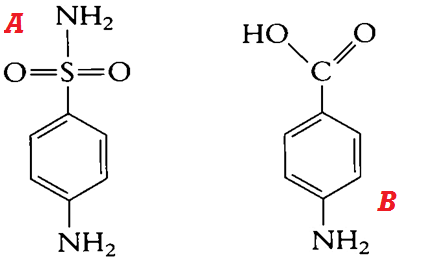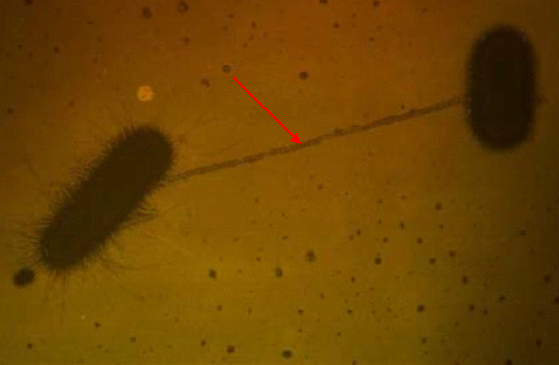Lichens possess varying antimicrobial properties; and they have been shown to be active against a plethora of pathogenic microorganisms including bacteria, fungi and viruses. Many reviews and research papers have well expanded and documented the biological and pharmacological importance of lichen secondary metabolites.
Lichens and lichen compounds have long been used by Native Americans, the Chinese, Europeans, Africans and the Indians as not just medicinal agents (because of the bioactive constituents that they inherently possess) but as important source of food, and for other industrial and economic purposes. The versatile and well-documented bioactive nature of lichen secondary metabolites often referred to as lichen acids is very promising for the development of potent antimicrobial agents.
Lichens have been used since time immemorial for different medicinal purposes and this is due to the fact that their secondary metabolites (i.e. lichen acids) contain unique biologically active compounds that serve many antimicrobial purposes. These macro-fungi population (a community of fungi and cyanobacteria) have attracted the attention of researchers, industrialists and professionals in the medical and pharmaceutical industry because of the important bioactive compounds that they synthesize; and which are rarely found in other natural compounds and materials.
The biological/antimicrobial activities of lichen secondary metabolites are many, and they include: antibacterial activity, antifungal activity, antiviral activity, anti-inflammatory, antipyretic activity, anti-herbivore activity and cytotoxic activity amongst others (Table 1).
ANTIBACTERIAL ACTIVITY OF LICHENS
Lichen secondary metabolites possess antibacterial activity. They have been shown to exhibit significant level of inhibitory effect on both Gram positive and Gram negative bacteria. Some lichens with antibacterial activity include those in the genus Ramalina, Parmelia, Umbilicaria, and Cladonia. Some available synthetic conventional antibiotics are not too effective for the treatment of some bacterial related infectious diseases owing to the growing level of resistance experienced amongst some pathogenic bacteria. Usnic acid, salazinic acid, stictic acid, and vulpinic acid are some examples of lichen secondary metabolites that have been effective to inhibit pathogenic bacteria effectively. Thus, lichen acids known to have sizeable antibacterial activities could serve as lead compounds in the development of novel antibacterial agents to contain the upward trend in bacteria resistance to some antibiotics.
Table 1. Synopsis of antimicrobial activities of some lichens
| Lichen | Reported antimicrobial activity | Pathogen | References |
| Parmelia perlata (L.) Ach. | Antiviral | Yellow fever virus, polio virus | Esimone et al., (2007) |
| Ramalina farinacea | Antiviral | HIV-1, Respiratory synctial virus (RSV) | Esimone et al., (2009) |
| Ramalina farinacea | Antiviral | Adenoviruses, herpes simplex virus (HSV) | Esimone et al., (2009) |
| Ramalina celastri | Antiviral | Arenavirus | Fazio et al., (2007) |
| Caloplaca regalis | Antibacterial | Gram positive bacteria | Paudel et al., (2008) |
| Usnea ghattensis (G.) Awasthi | Antibacterial | Gram positive and Gram negative bacteria | Srivastava et al., (2013) |
| Roccella belangeriana (Awasthi) | Antibacterial | Gram negative bacteria | Devi et al., (2011) |
| Caloplaca cerina | Antifungal | Fungi | Manojlovic et al., (2005) |
| Rubia tictorum | Antifungal | Fungi | Same as above |
| Rhamnus frangula | Antifungal | Fungi | Same as above |
ANTIVIRAL ACTIVITY OF LICHENS
Lichen acids have also been documented to exhibit antiviral activities against some human viral pathogens including respiratory synctial virus (RSV), herpes simplex virus (HSP), human papillomavirus virus (HPV), arenaviruses, and adenoviruses amongst others. Lichens exhibit antiviral activities aside other antimicrobial actions they express, and thus could be used as potential drug candidates for the development of novel antiviral drugs. Usnic acid and parietin produced by the lichen genera Usnea and Ramalina are some lichen compounds with antiviral activity.
ANTICANCER OR ANTIPROLIFERATIVE ACTIVITY OF LICHENS
Lichens possess antitumour or anticancer activity. They have been found to inhibit some malignant cancerous growth, and even cause apoptosis (programmed cell death) in other related tumours. Usnic acid is one of the widely studied lichen acids, and it has been found to be very effective in addition to other secondary metabolites to inhibit some human cancerous cell lines such as breast cancer cell and prostate cancer cell lines. Lichen secondary metabolites (especially usnic acid) have been found to effectively inhibit the cell growth and proliferation of some human cancerous cell lines. The reported apoptotic activity and anti-mutagenic effect of lichen secondary metabolites is promising in developing novel anticancer drugs.
ANTI-HERBIVORE ACTIVITY OF LICHENS
Secondary metabolites of lichens also protect lichens against herbivorous invertebrates that usually feed on them. Lichens derive survival benefits from the secondary metabolites they synthesize as these compounds have been reported to ward off herbivores and other invertebrates that may want to prey or feed on them.
ANTIFUNGAL ACTIVITY OF LICHENS
Antifungal activity of lichen secondary metabolites (e.g. usnic acid) against some fungal species (e.g. Candida albicans and Aspergillus) has also been well documented. Usnea species, Calaplaca and Parmelia are some lichenized fungi with antifungal activities.
OTHER BIOLOGICAL ACTIVITY OF LICHENS
The wide variety of antimicrobial activity expressed by secondary metabolites of lichens on other organisms including animals and microbes makes them putative composites for the development of antiviral agents. Other reported biological activities of lichen secondary metabolites are antipyretic activity, anti-cytotoxic activity, and anti-inflammatory and antioxidant activity. The huge secondary metabolites produced by lichens stand out to be the cure and answer to the growing demand of potent antimicrobial agents (inclusive of antibacterials, antifungal and antivirals) due to the pertinent and growing nature of multidrug resistant strains of microbes now experienced in the health sector world over.
Thus, it is critical to step up research towards harnessing some of these good qualities of lichen secondary metabolites especially in the area of developing novel antimicrobial agents for therapeutic purposes. Aside their strong antimicrobial activities and application in the medical and pharmaceutical industry, lichens are also used as food or fodder, dyes and perfumes.
Though slow-growing, lichen secondary metabolites holds sway to revolutionized healthcare delivery across the world in terms of better therapeutic agents and other biological significance which they confer. It is therefore very important for pharmaceutical companies and researchers to employ high-throughput techniques in the study of lichen compounds (which are enormous and diverse) with a view to developing potent novel antimicrobial agents from them.
References
Anaissie E.J, McGinnis M.R, Pfaller M.A (2009). Clinical Mycology. 2nd ed. Philadelphia, PA: Churchill Livingstone Elsevier. London.
Beck R.W (2000). A chronology of microbiology in historical context. Washington, D.C.: ASM Press.
Black, J.G. (2008). Microbiology: Principles and Explorations (7th ed.). Hoboken, NJ: J. Wiley & Sons.
Brooks G.F., Butel J.S and Morse S.A (2004). Medical Microbiology, 23rd edition. McGraw Hill Publishers. USA.
Brown G.D and Netea M.G (2007). Immunology of Fungal Infections. Springer Publishers, Netherlands.
Calderone R.A and Cihlar R.L (eds). Fungal Pathogenesis: Principles and Clinical Applications. New York: Marcel Dekker; 2002.
Chakrabarti A and Slavin M.A (2011). Endemic fungal infection in the Asia-Pacific region. Med Mycol, 9:337-344.
Champoux J.J, Neidhardt F.C, Drew W.L and Plorde J.J (2004). Sherris Medical Microbiology: An Introduction to Infectious Diseases. 4th edition. McGraw Hill Companies Inc, USA.
Chemotherapy of microbial diseases. In: Chabner B.A, Brunton L.L, Knollman B.C, eds. Goodman and Gilman’s The Pharmacological Basis of Therapeutics. 12th ed. New York, McGraw-Hill; 2011.
Chung K.T, Stevens Jr., S.E and Ferris D.H (1995). A chronology of events and pioneers of microbiology. SIM News, 45(1):3–13.
Germain G. St. and Summerbell R (2010). Identifying Fungi. Second edition. Star Pub Co.
Ghannoum MA, Rice LB (1999). Antifungal agents: Mode of action, mechanisms of resistance, and correlation of these mechanisms with bacterial resistance. Clin Microbiol Rev, 12:501–517.
Gillespie S.H and Bamford K.B (2012). Medical Microbiology and Infection at a glance. 4th edition. Wiley-Blackwell Publishers, UK.
Larone D.H (2011). Medically Important Fungi: A Guide to Identification. Fifth edition. American Society of Microbiology Press, USA.
Levinson W (2010). Review of Medical Microbiology and Immunology. Twelfth edition. The McGraw-Hill Companies, USA.
Madigan M.T., Martinko J.M., Dunlap P.V and Clark D.P (2009). Brock Biology of Microorganisms, 12th edition. Pearson Benjamin Cummings Inc, USA.
Mahon C. R, Lehman D.C and Manuselis G (2011). Textbook of Diagnostic Microbiology. Fourth edition. Saunders Publishers, USA.
Discover more from Microbiology Class
Subscribe to get the latest posts sent to your email.





